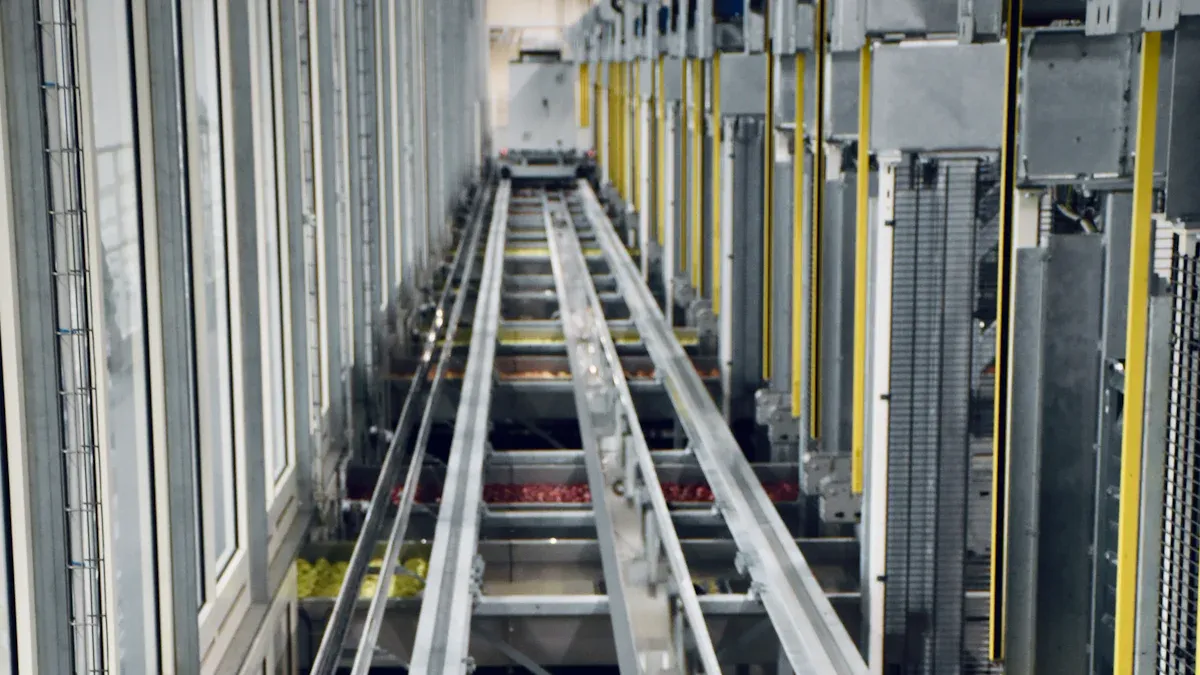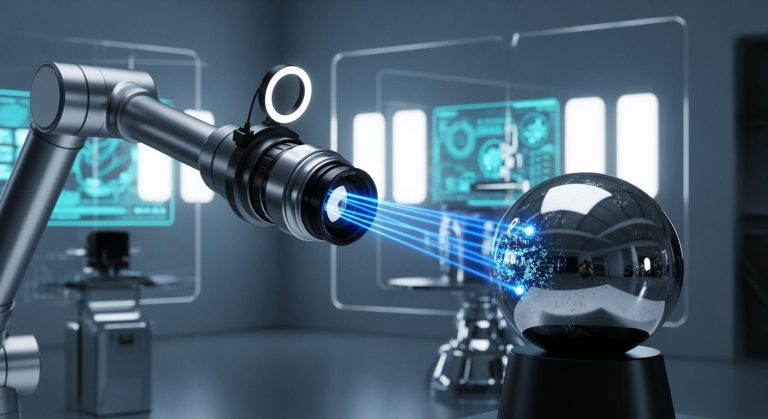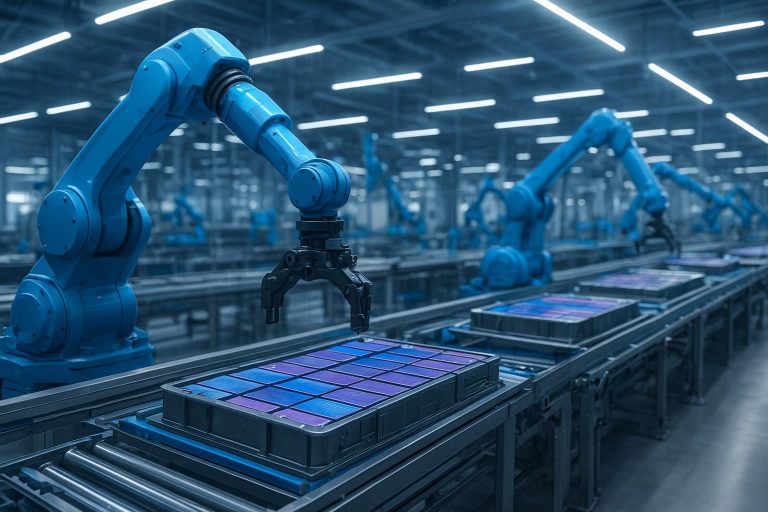
A fcn fully convolutional network machine vision system uses only convolutional layers to process images. This design lets the system make pixel-level decisions for every part of an image. In a fcn fully convolutional network machine vision system, the network does not use dense layers. Instead, it keeps the spatial structure of the image. The main goal of a fcn fully convolutional network machine vision system is to make a detailed prediction for each pixel. Many experts use a fully convolutional network to help machines see objects and shapes clearly.
Key Takeaways
- Fully Convolutional Networks (FCNs) use only convolutional layers to make detailed predictions for every pixel in an image, keeping the image’s spatial structure intact.
- FCNs process images of any size efficiently, making them fast and flexible for real-world tasks like medical imaging, industrial inspection, and semantic segmentation.
- Pixel-wise prediction helps FCNs detect fine details and boundaries, improving accuracy and reliability in tasks that need precise image analysis.
- Pooling and upsampling layers allow FCNs to focus on important features and restore image size, supporting detailed and accurate output images.
- FCNs outperform traditional networks in speed and memory use, making them ideal for applications that require quick and accurate image processing.
FCN Architecture
Fully Convolutional Network
A fully convolutional network forms the backbone of many modern machine vision systems. This type of network uses only convolutional, pooling, and upsampling layers. The design avoids fully connected layers, which means the network can process an input image of any size. Each convolutional layer acts like a filter that slides over the input image, capturing important features at every location. Pooling layers help the network summarize small regions, making the system more robust to small changes in the input image. Upsampling layers restore the size of the output image, so the final result matches the original input image dimensions.
The MIT Vision Book describes how this structure helps maintain spatial information. By skipping fully connected layers, the network keeps the layout of the input image throughout the process. This approach allows the fcn fully convolutional network machine vision system to create an output image that aligns with the input image, making it ideal for tasks like segmentation. The network can handle images of different sizes without needing to change its structure.
- The model replaces the final fully connected layer with a convolutional layer.
- This change lets the network make predictions for each pixel, not just for the whole image.
- The fcn fully convolutional network machine vision system can accept any input image size.
- The network improves accuracy by using convolutional fusion to connect input image features.
Pixel-Wise Prediction
A fully convolutional network excels at pixel-wise prediction. Instead of giving a single label for the whole input image, the network predicts a label for every pixel. This method helps the system find detailed shapes and boundaries in the input image. Researchers have shown that pixel-wise prediction, combined with confidence scores, improves the reliability of segmentation tasks. For example, in medical image segmentation, the network can detect small features and provide more accurate results.
Pixel-wise prediction also helps the network spot errors. By looking at the confidence of each pixel’s prediction, the system can flag uncertain areas in the output image. This makes the fcn fully convolutional network machine vision system more robust and trustworthy in real-world tasks.
Upsampling and Pooling
Pooling and upsampling play key roles in the architecture. Pooling layers reduce the size of the input image, helping the network focus on important features and ignore small changes. This step makes the network faster and more efficient. After pooling, the network uses upsampling layers to bring the output image back to the same size as the input image.
Research shows that different upsampling methods, like bilinear interpolation, deconvolution, and super-resolution convolution, affect the accuracy of the output image. Super-resolution methods often give the best results, but even simple methods like bilinear interpolation work well. Pretrained backbones can also boost performance, while some network structures may lower accuracy.
The combination of pooling and upsampling allows the fully convolutional network to process the input image efficiently and produce a detailed output image. The network keeps the spatial layout from the input image, so the output image matches the original scene. This design supports end-to-end learning, where the network learns to map the input image directly to the output image for tasks like segmentation.
Advantages
Efficiency
Fully Convolutional Networks (FCNs) process images quickly and use resources wisely. They do not need fully connected layers, so they require less memory and fewer computations. FCNs can handle high-resolution images without slowing down. In real-world tasks, such as damage assessment of reinforced concrete, FCNs achieved a damage classification accuracy of 98.75% and a segmentation accuracy of 95.98%. These results show that FCNs work well even with large and complex images. Engineers and researchers use FCNs to speed up image analysis in many fields.
Tip: FCNs help machines analyze images faster, making them a good choice for real-time applications.
Accuracy
FCNs provide high accuracy in tasks like image segmentation. Their design allows the network to keep important details from the input image. On the PASCAL VOC 2012 dataset, enhanced encoder-decoder networks based on FCN architecture showed improved segmentation accuracy compared to traditional methods. The mean Intersection over Union (mIoU) metric confirmed this gain. Innovations like multi-residual connections and balanced loss functions help FCNs learn better and reduce mistakes. These improvements make FCNs reliable for tasks that need precise results, such as medical imaging or object detection.
- FCNs capture fine details in images.
- They reduce information loss during training.
- Their accuracy helps in critical applications.
Flexibility
FCNs adapt to different image sizes and types. The encoder-decoder structure lets the network compress and then restore spatial information. This design allows FCNs to process images of any size without changing the network. For example, models like 2D U-Net use this approach to handle both small and large images. Some versions even work with 3D data, showing that FCNs can adjust to many tasks and data formats. This flexibility makes FCNs useful in fields like healthcare, industry, and research.
| Feature | FCN Advantage |
|---|---|
| Input Size | Any size supported |
| Data Types | 2D and 3D images |
| Applications | Wide range |
Applications in Machine Vision

Semantic Segmentation
Fully Convolutional Networks play a key role in semantic segmentation. These networks help computers understand what each part of an image represents. For example, a machine can look at a street scene and label every pixel as road, car, or person. FCNs create detailed segmentation maps that show the boundaries of different objects. This helps machines see where one object ends and another begins. Researchers have built new models, like NSNPFormer, that use ideas from FCNs. NSNPFormer reached mean Intersection over Union scores of 53.7 on the ADE20K dataset and 58.06 on the Pascal Context dataset. These results show that FCNs provide a strong base for semantic tasks and inspire new advances.
FCNs help machines draw clear lines between objects in images, making them useful for tasks that need precise boundaries.
Image Classification
Image classification is another important use for FCNs. In this task, the network looks at an image and decides what it shows. FCNs can handle images of any size, which makes them flexible for many jobs. They can classify objects in photos, medical scans, or industrial images. Some systems use FCNs to find and label many objects in one image. Others use them to sort images into groups, such as healthy or damaged products. FCNs also support multi-label image classification, where an image can belong to more than one group. This ability helps in areas like wildlife monitoring, where a single photo may show several animal species.
- FCNs work well with both simple and complex images.
- They can process large batches of images quickly.
- Their design supports both single-label and multi-label image classification.
Industrial and Medical Use Cases
FCNs have many uses in industry and medicine. In factories, they help inspect products for defects by analyzing images from cameras. Machines can spot cracks, dents, or missing parts with high accuracy. In medicine, FCNs assist doctors by segmenting organs or tumors in scans. This helps doctors plan treatments and track changes over time. FCNs also support image restoration, such as removing noise from old photos or medical images. Their ability to keep spatial details makes them valuable for tasks that need both speed and precision.
| Field | FCN Application |
|---|---|
| Manufacturing | Defect detection, inspection |
| Healthcare | Organ and tumor segmentation |
| Restoration | Image denoising, enhancement |
FCN vs. Other Networks
R-CNN Comparison
Researchers often compare Fully Convolutional Networks (FCNs) with Region-based Convolutional Neural Networks (R-CNNs) for object detection tasks. R-CNN models, such as Faster R-CNN, focus on detecting objects by generating region proposals and then classifying each region. FCNs, in contrast, predict labels for every pixel, making them better for segmentation tasks.
The 2016 COCO object detection challenge highlights key differences. Faster R-CNN models, especially those using ResNet and Inception ResNet, achieved high accuracy with a mean Average Precision (mAP) of 41.3%. These models excel at detecting small objects but require more time per image. R-FCN models process images faster but do not reach the same accuracy as Faster R-CNN when speed is not a concern. The table below shows a summary:
| Metric | Faster R-CNN | R-FCN |
|---|---|---|
| Speed | Slower inference; ~1 FPS with 300 proposals | Faster than Faster R-CNN |
| Accuracy (mAP) | Higher accuracy; best single model in 2016 COCO challenge (41.3% mAP) | Slightly less accurate but good balance with speed |
| Number of proposals impact | Speed improves significantly (3x faster with 50 vs 300 proposals) with only ~4% accuracy drop | Speed improvement less significant due to less work per ROI |
| Feature extractor impact | Accuracy improves notably with better extractors (e.g., Inception ResNet) | Also benefits from better extractors but with lower accuracy ceiling |
| Small object detection | Better performance, especially with ensemble Faster R-CNN models | Not specifically highlighted |
| Trade-off | Higher accuracy at cost of slower speed | Faster speed with slightly reduced accuracy |
FCNs offer pixel-level predictions, while R-CNNs focus on object-level detection. The choice depends on the task’s needs for speed and accuracy.
U-Net and Variants
U-Net and its variants build on the FCN architecture but add features to improve segmentation. U-Net uses an encoder-decoder structure with skip connections, which helps the network keep fine details. Attention U-Net and Attention Residual U-Net add attention mechanisms and residual connections for even better results.
A study using the 2018 Data Science Bowl dataset for breast cancer segmentation compared these models. The results show that Attention Residual U-Net achieves the highest accuracy, especially with larger images. The table below summarizes the findings:
| Model | Accuracy (128×128 images) | Accuracy (256×256 images) |
|---|---|---|
| U-Net | 82.41% | 86.22% |
| Attention U-Net | 82.43% | 86.35% |
| Attention Residual U-Net | 89.35% | 98.35% |
U-Net variants improve segmentation accuracy, especially for high-resolution images. These models help in medical and scientific image analysis.
When to Use FCN
FCNs work best for tasks that need pixel-wise predictions, such as semantic segmentation or detailed image labeling. They handle images of any size and keep spatial information throughout the process. Engineers choose FCNs when they need fast, flexible, and accurate segmentation. For object detection or tasks that need bounding boxes, R-CNN models may be a better fit. U-Net and its variants serve well in medical imaging, where high accuracy and detail matter most.
Tip: Select FCNs for projects that require detailed maps of objects or regions in images. Choose other networks if the task focuses on detecting and classifying whole objects.
Implementation Tips
Data Needs
A fully convolutional network needs a large and diverse dataset to perform well. The network learns best when the input image set covers many scenarios. Each input image should have clear labels for every pixel. This helps the network understand the details in each input image. For example, in medical imaging, each input image must show different organs or tissues. In industrial inspection, the input image should include both normal and defective products. Data augmentation, such as flipping or rotating the input image, can increase the dataset size and improve results.
Tip: Always check that the input image quality is high. Blurry or low-resolution images can reduce accuracy.
Computational Resources
Training a fully convolutional network requires strong hardware. The network processes each input image through many layers, which uses a lot of memory and computing power. Some teams use cloud servers or edge devices to handle this load. The table below shows how different systems manage computational resources and input image processing:
| Case Study / Framework | Metrics / Insights | Description |
|---|---|---|
| FogROS2-LS Framework | Latency, dynamic server selection | Offloads tasks from robots to cloud/edge; switches servers to reduce input image latency. |
| Deep Reinforcement Learning (DDPG) Framework | Simulated latency, computational load | Allocates resources for input image tasks in vehicles; balances speed and quality. |
| FPGA-based Lidar Odometry Processing | Resource usage, concurrency gains | Processes input image data in real time with low resources and high parallelism. |
| Utility-based Offloading (Unicycle Robot) | Mission duration, offloading triggers, success rate | Decides when to process input image locally or remotely; improves mission success. |
A modern GPU can speed up training and inference. For real-time tasks, engineers often use edge computing to process the input image close to where it is captured.
Integration
Integrating a fully convolutional network into a machine vision system takes careful planning. The system must handle the input image flow from cameras or sensors. Engineers often use frameworks like TensorFlow or PyTorch to build and deploy the network. The input image pipeline should support fast loading and preprocessing. Some teams use offloading strategies to send the input image to the cloud when local resources are low. This keeps the system running smoothly.
- Test the network with different input image types before full deployment.
- Monitor the system to catch errors in input image processing.
- Update the model as new input image data becomes available.
Note: Good integration ensures that every input image is processed quickly and accurately, leading to better results in real-world applications.
Fully Convolutional Networks (FCNs) play a vital role in modern machine vision systems. They deliver fast and accurate pixel-wise predictions, making them ideal for detailed image analysis. Studies show that FCNs with advanced backbones, like ResNet101, achieve high accuracy and reduce segmentation time in medical imaging. Their ability to handle complex boundaries and provide efficient segmentation supports many real-world applications.
FCNs help machines see and understand images with greater detail. Engineers and researchers can use FCNs to solve challenges in healthcare, industry, and beyond.
FAQ
What makes a Fully Convolutional Network different from a regular CNN?
A Fully Convolutional Network does not use fully connected layers. It keeps only convolutional, pooling, and upsampling layers. This design lets the network make predictions for every pixel in an image.
Can FCNs work with images of any size?
Yes, FCNs can process images of any size. The network does not require resizing before input. This flexibility helps in many real-world applications.
Where do engineers use FCNs most often?
Engineers use FCNs in medical imaging, industrial inspection, and self-driving cars. FCNs help machines find objects, segment images, and detect defects.
Tip: FCNs also support tasks like image restoration and enhancement.
Do FCNs need a lot of data to work well?
FCNs perform best with large and varied datasets. More data helps the network learn to recognize different patterns and details in images.
| Data Size | FCN Performance |
|---|---|
| Small dataset | Lower accuracy |
| Large dataset | Higher accuracy |
See Also
Essential Insights Into Transfer Learning For Machine Vision
Ways Deep Learning Improves The Performance Of Machine Vision
Understanding Computer Vision Models Within Machine Vision Systems
A Detailed Look At Cameras Used In Machine Vision Systems
Neural Network Frameworks Transforming The Future Of Machine Vision








